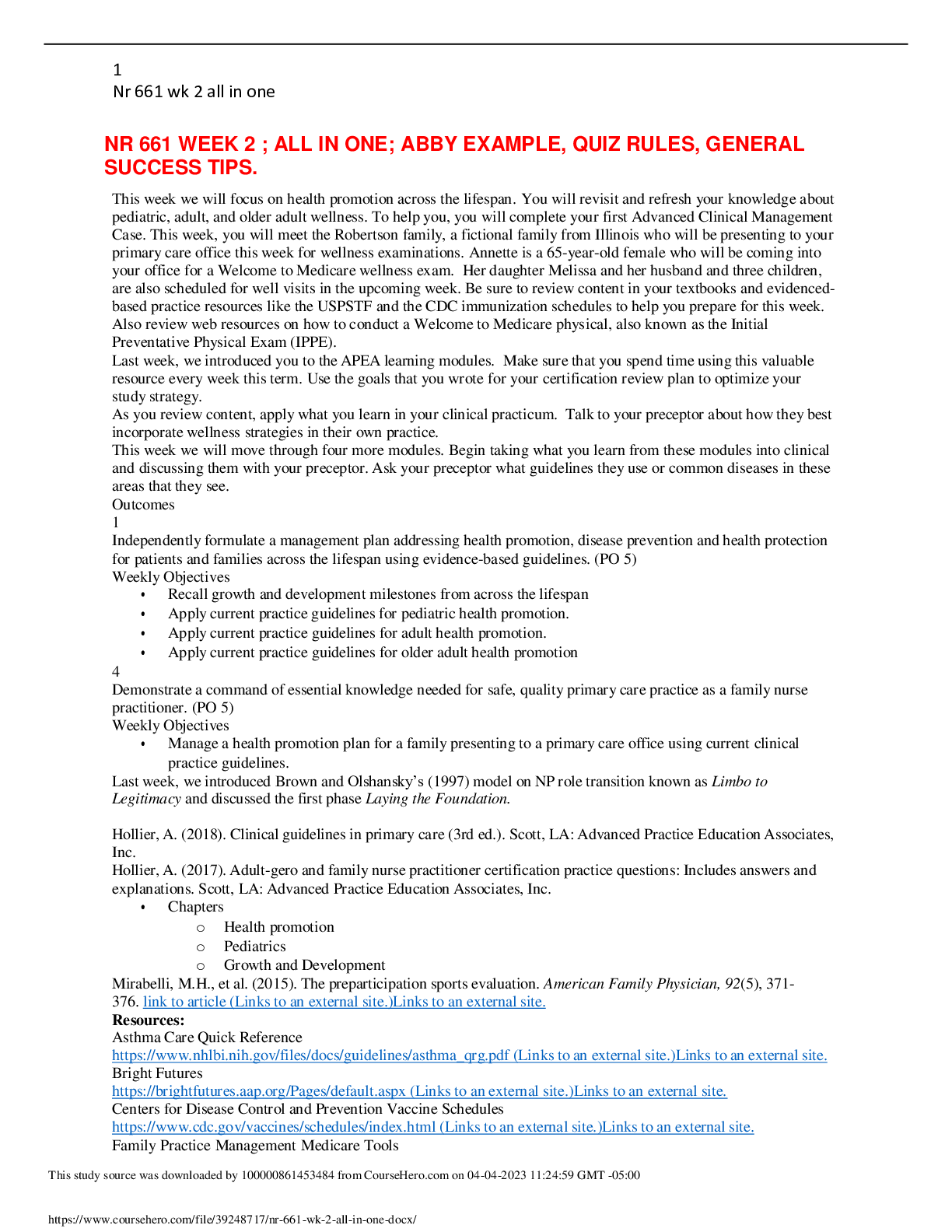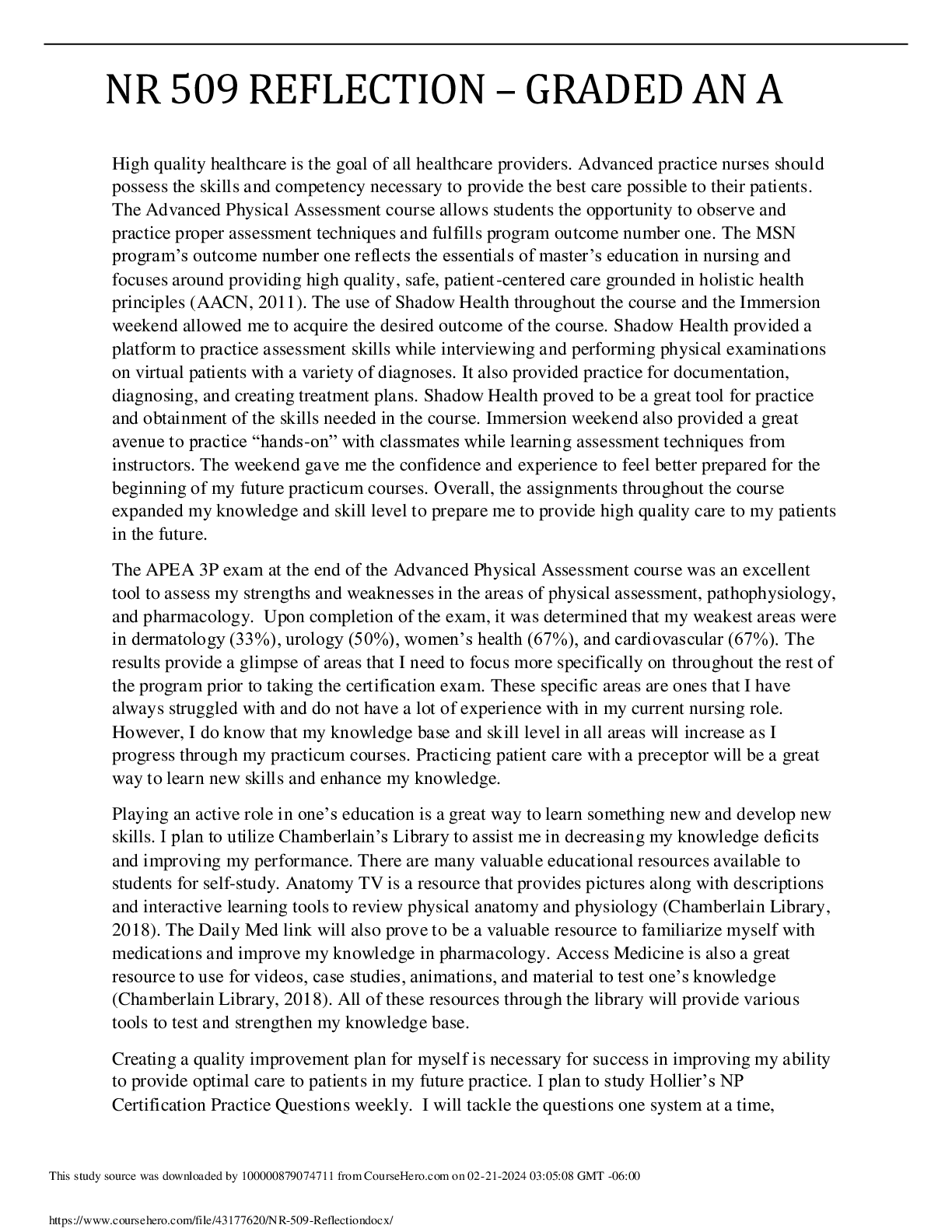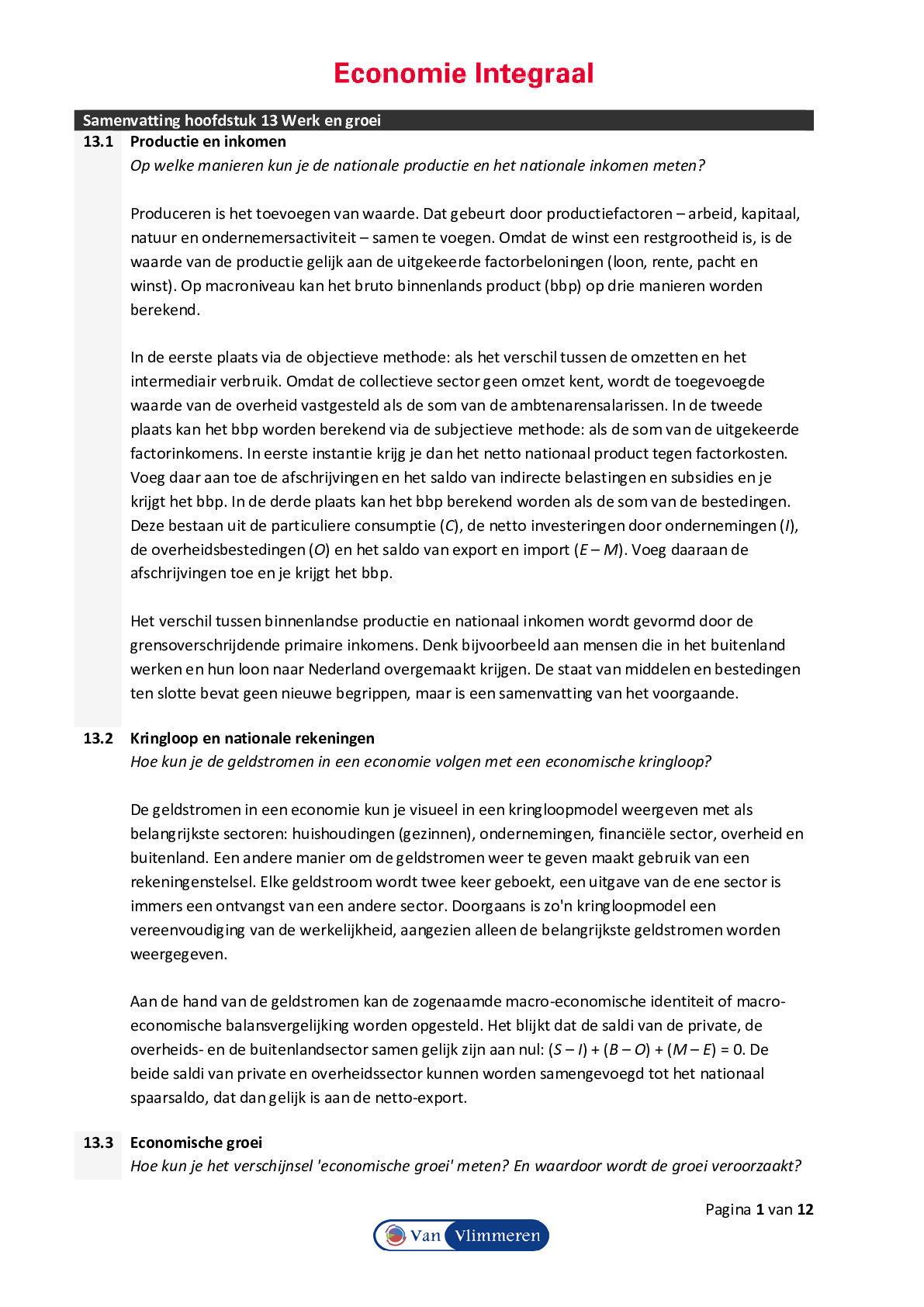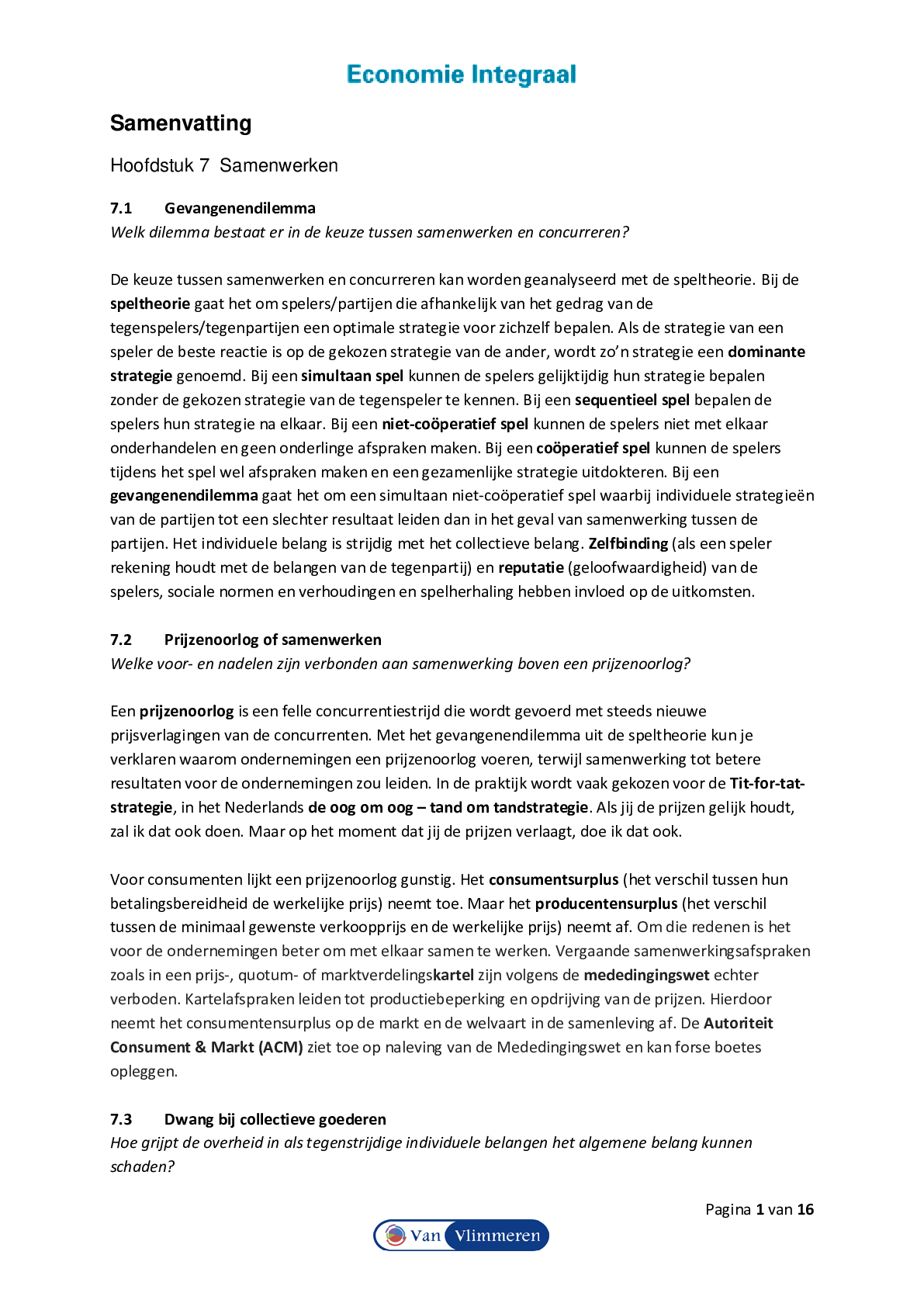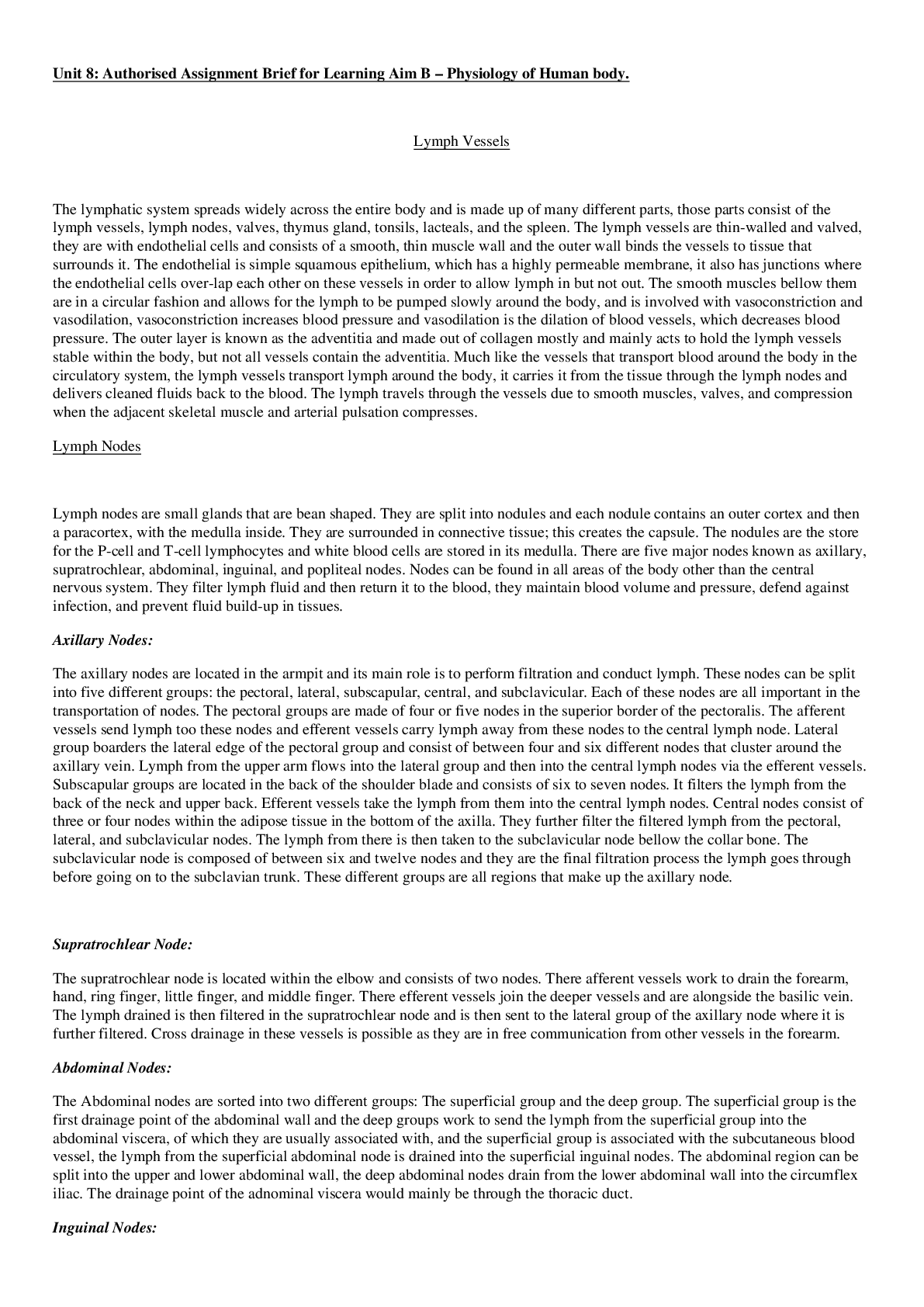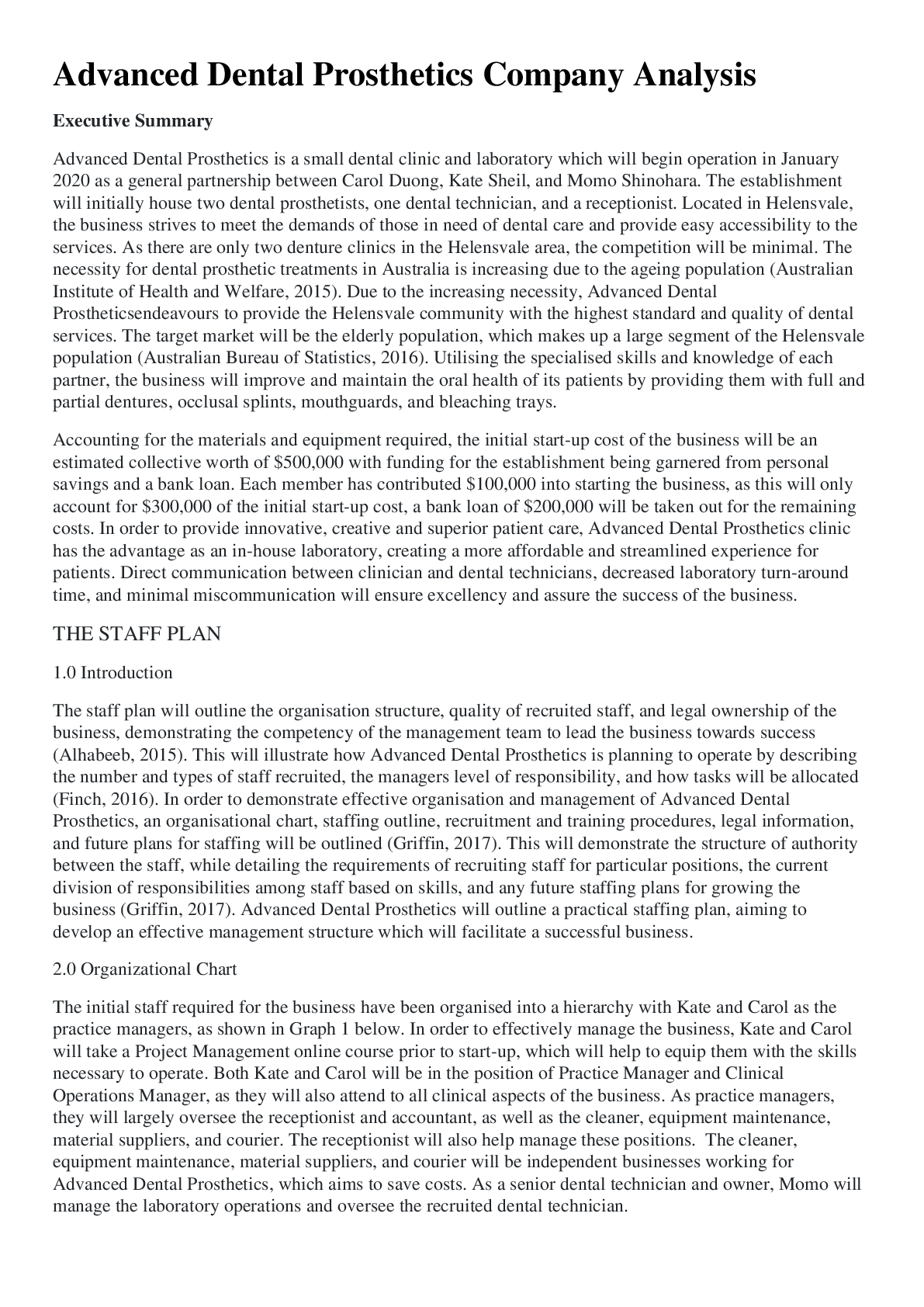Sociology > SUMMARY > SOCS 325 Week 7 Article Summary – Canopy Walkways for Conservation - Graded An A (All)
SOCS 325 Week 7 Article Summary – Canopy Walkways for Conservation - Graded An A
Document Content and Description Below
Running head: WEEK 7 ARTICLE SUMMARY: CANOPY WALKWAYS 1 SOCS 325 Week 7 Article Summary – Canopy Walkways for Conservation Week 7 Article Summary: Canopy Walkways for Conserv... ation All of the research and all of the awarness about the deforestation that is taking place in our trpoical rainforests has done little to slow the destruction of these tropical ecosystems. Many cultures that surround and live withing these ecosystems rely on the rainforst for their food supply, shelter, and economic stability. While this dependences on the forest supports millions of people, it is also helping to destroy the very thing that gives them life. Over the last two decades canopy ecology has emerged as a new tool of research for tropical biologists [ CITATION Low09 \l 1033 ]. One aspect of canopy ecology that looks to be promising in terms of socioeconomic and scientific success is the research into the effectiveness of ecotourism operations that take place in the canopy of the tropical rainforsts. Lowman states that in the article that she is trying to grapple with what she sees as an oxymoron in the sense that biological researchers are using ecotourism to increase conservation awareness. One of the types of ecotourism used to access the canopies of the tropical rainforests is a canopy walkway. Currently over 20 walkways are in operation in rain forests around the world [ CITATION Low09 \l 1033 ]. Walkways help to stimulate the local economies through local labor and material used in construction as well as local employment. In the amazon case study, the walkway at the Amazon Conservatory for Tropical Studies provides approximately 212 jobs for local villagers [ CITATION Low09 \l 1033 ]. The question is, can these type of tools also be used to stimulate conservation growth as well as economic growth. In the article, Lowman questions the lack of data that supports the existence of walkways as they pertain to ecotourism and conservation. One example that Lowman uses in her article is the first canopy walkway that was constructed in Lamington National Park in Australia at O’Reily’s Rain Forest Lodge. She criticizes that while this walkway was built in a developed country, that they lacked the data to prove that it increased conservation or increased ecotourism. I think that the issue that she was trying to show was that in this case the walk way was built to increase profits. It is evident in the article that the Australians did not have in place a metrics to quantify the different aspect of the business and how the contributed to the overall well being of the business. More then likely they did not have their accounting set up to show gains or losses by department or how one department impacted another. Lowman contended that the business felt that they aided in conservation but that they could not produce any data that supported that claim. This was addressed by Lowman stating “they are intuitively confident that their walkways aided conservation” [ CITATION Low09 \l 1033 ]. It is obvious from reading the article that Lowman is skeptical of “green” walkways aiding conservation efforts and that she is more in favor of scientific research and publication. Although, she does state that Canopy research promotes conservation through several avenues, one of these avenues she lists as providing economic opportunities such as canopy walkways and broader education through ecotourism [ CITATION Low09 \l 1033 ]. While data does not normally exist to support these types of ecotourism, should we count them as an asset in increasing awareness of conservation. The answer is simply yes, because you cannot quantify the potential that one inspired person can have. In our human history we have many examples of inspired individuals who stood up for what the believed in and galvanized others into a movement that brought about change. One instance that comes to mind is Gandhi’s salt march of 1930. Imagine then if one person who participates in ecotourism is inspired by what they see in the canopy of a tropical rainforest, then what are they capable of accomplishing. References Lowman, M. (2009). Canopy Walkways for Conservation: A Tropical Biologist's Panacea or Fuzzy Metrics to Justify Ecotourism. Biotropica , 41 (5), 545-548. [Show More]
Last updated: 6 months ago
Preview 1 out of 4 pages
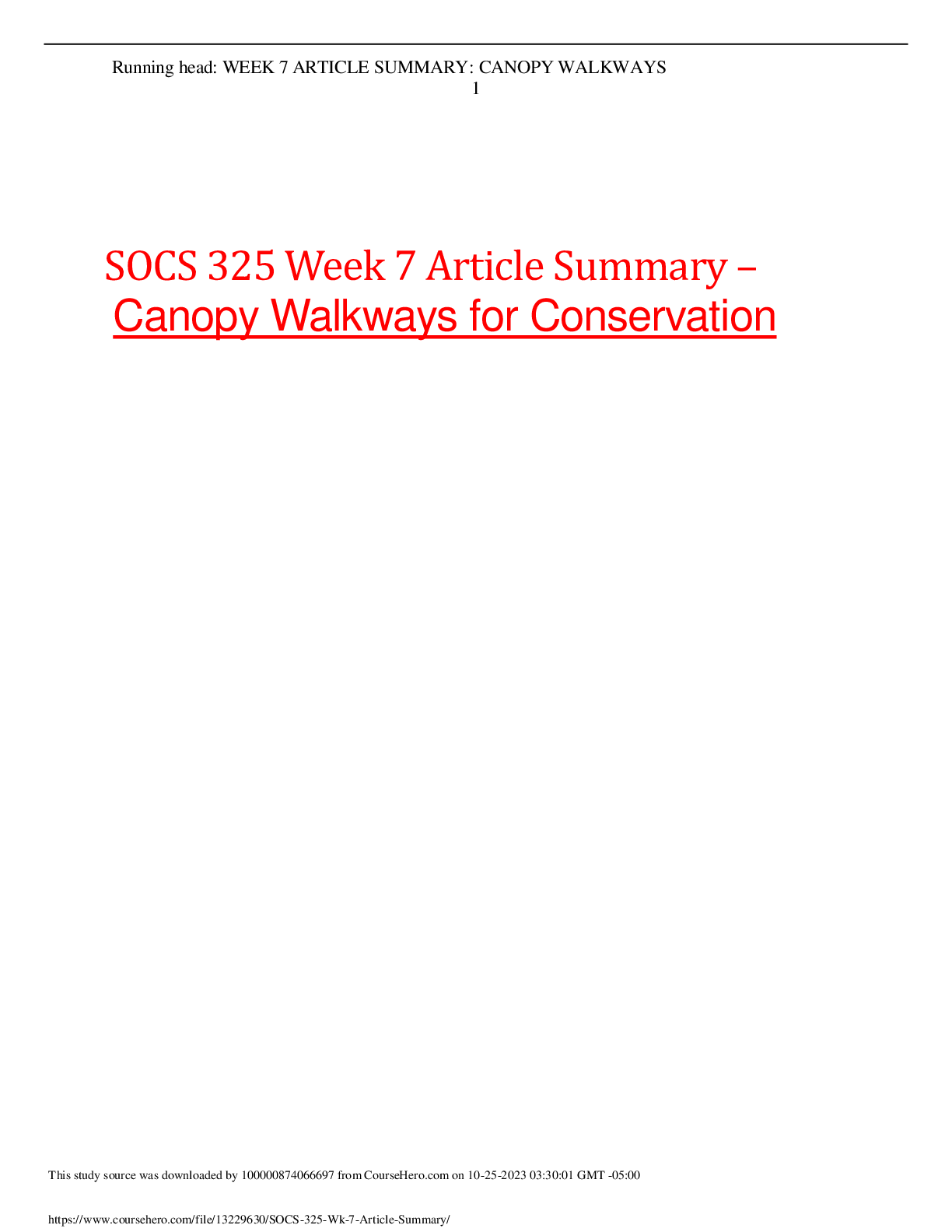
Reviews( 0 )
Document information
Connected school, study & course
About the document
Uploaded On
Oct 25, 2023
Number of pages
4
Written in
Additional information
This document has been written for:
Uploaded
Oct 25, 2023
Downloads
0
Views
29







